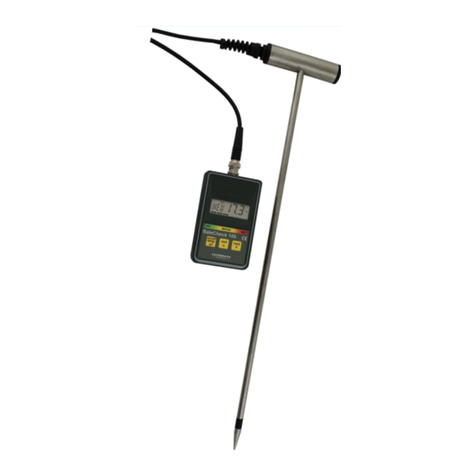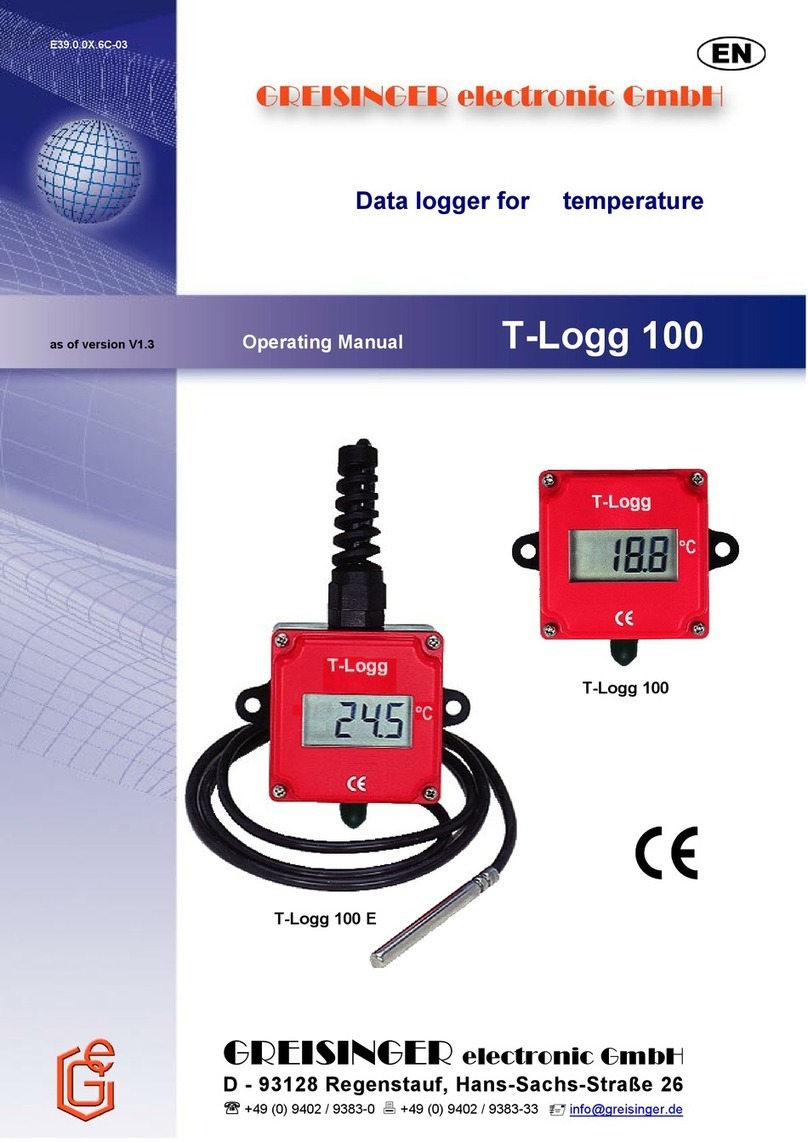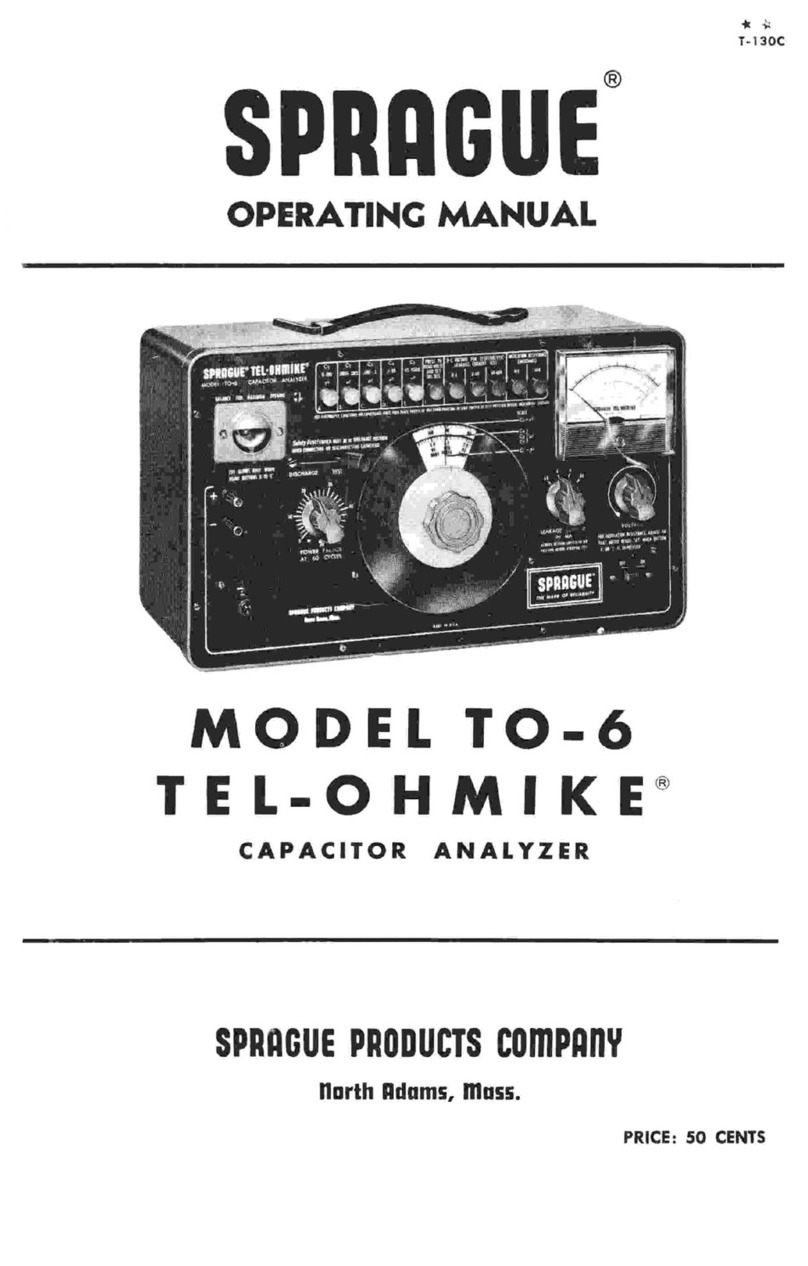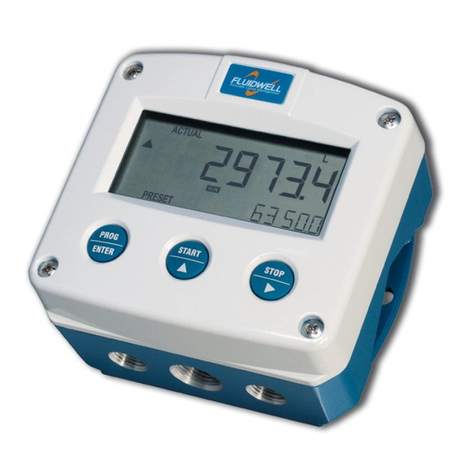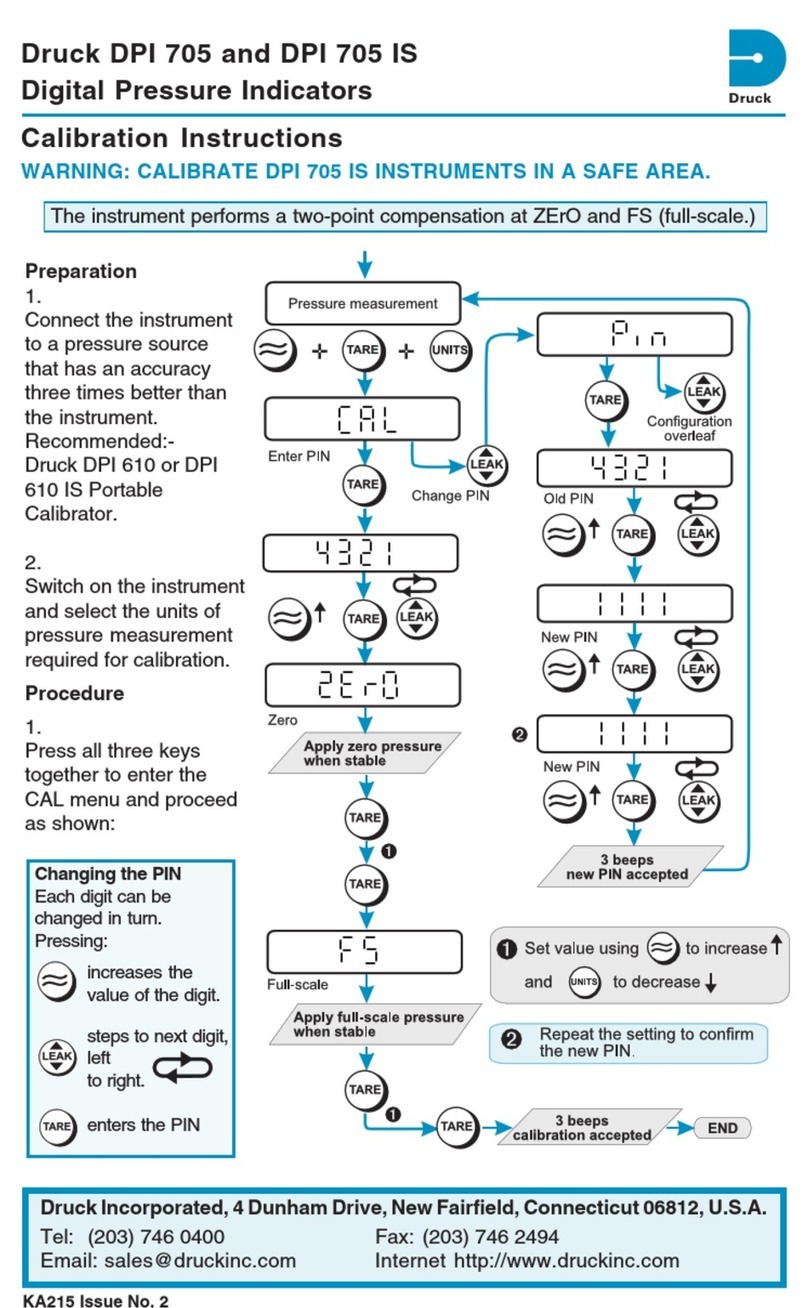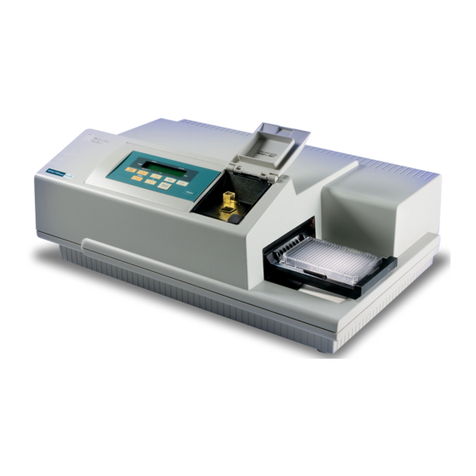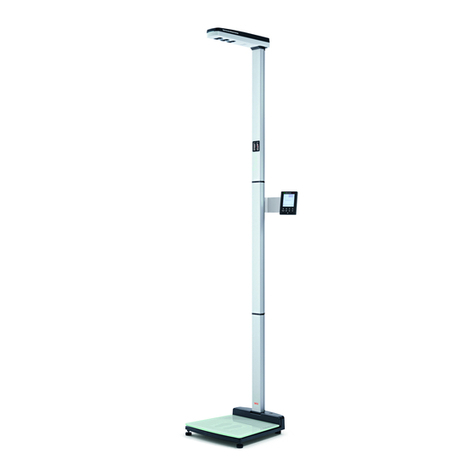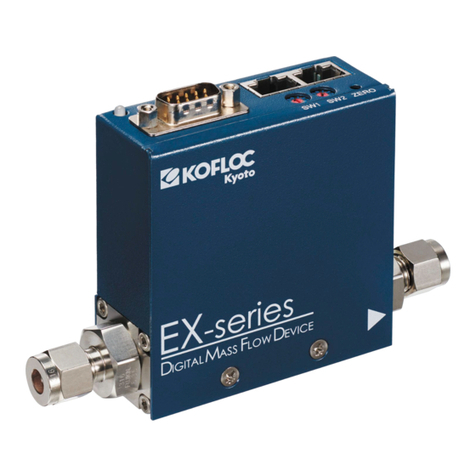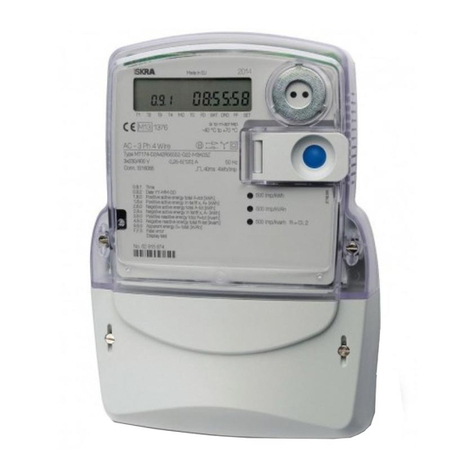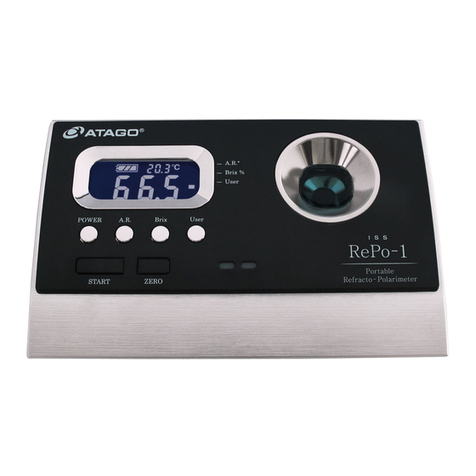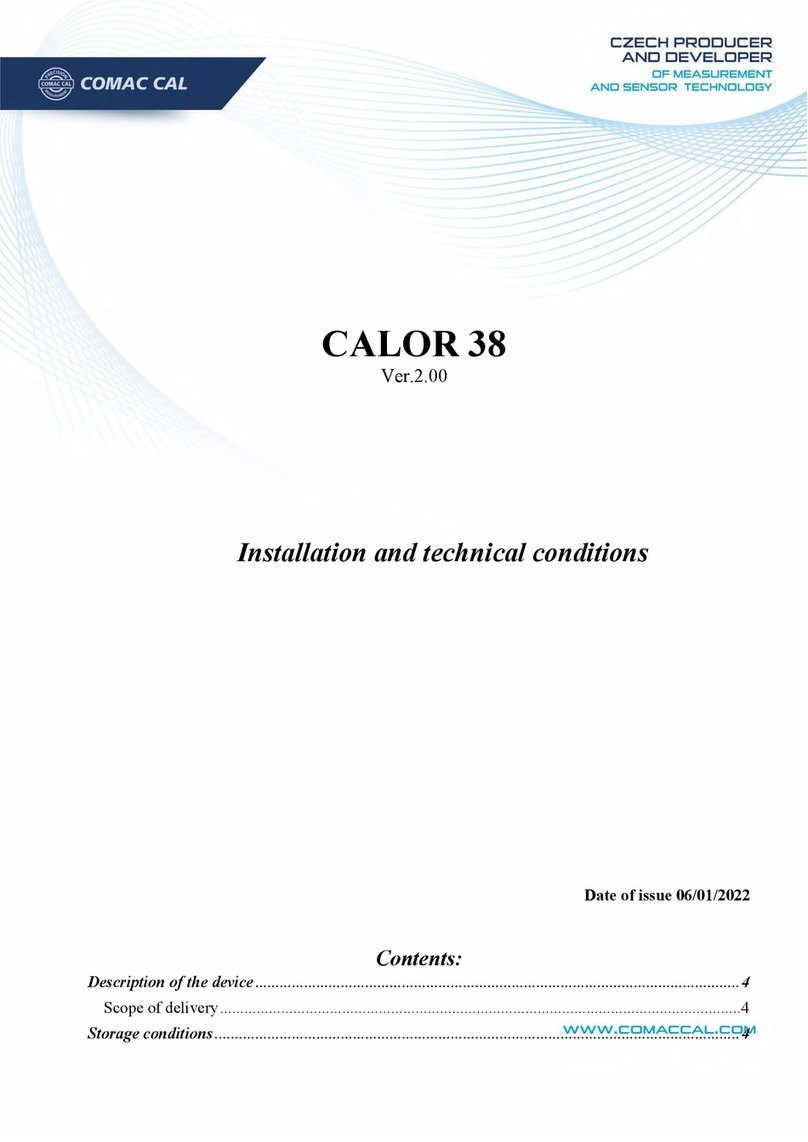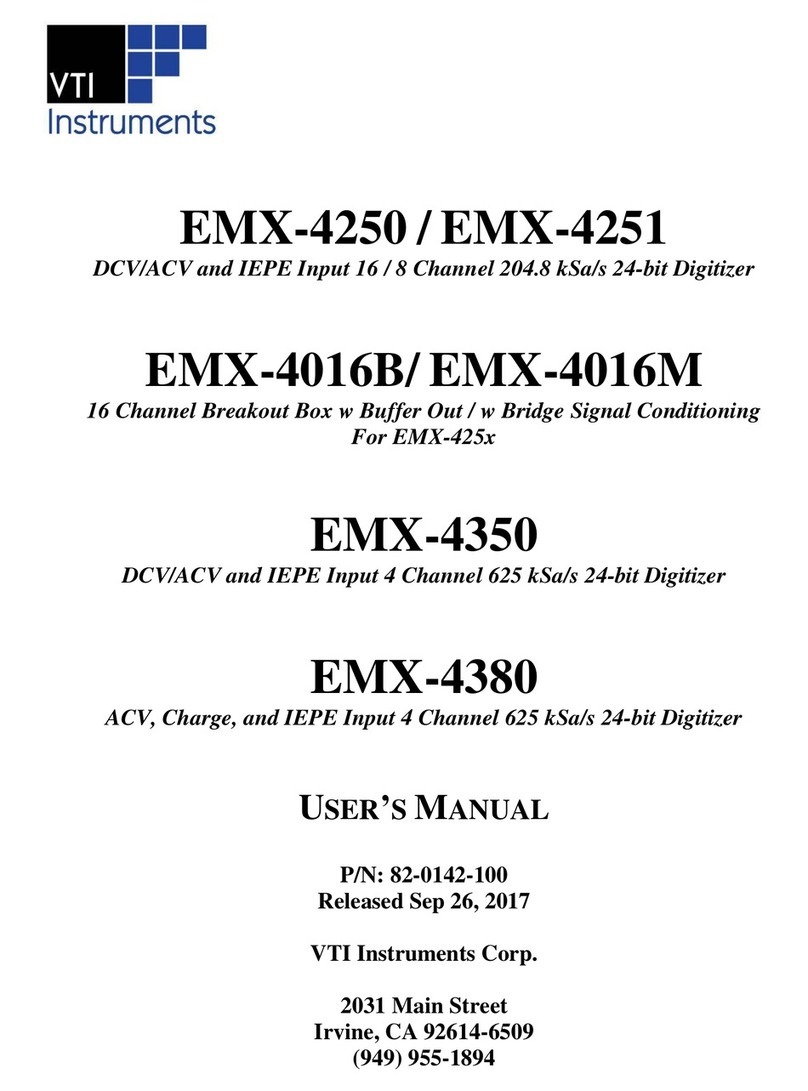GREISINGER electronic GMR 110 User manual

H63.0.21.6C-01
GREISINGER electronic GmbH
D - 93128 Regenstauf, Hans-Sachs-Straße 26
+49 (0) 9402 / 9383-0 +49 (0) 9402 / 9383-33 [email protected]
as of version 2.1 GMR 110
Operating Manual
Resistive material moisture measuring instrument
with integrated measuring needles
WEEE-Reg.-Nr. DE 93889386

H63.0.21.6C-01 Operating Manual GMR 110 page 2 of 12
_____________________________________________________ _____________________________________________________________________________
Index
1GENERAL NOTE .......................................................................................................................................2
2SAFETY........................................................................................................................................................3
2.1 INTENDED USE.........................................................................................................................................3
2.2 SAFETY SIGNS AND SYMBOLS...................................................................................................................3
2.3 SAFETY GUIDELINES.................................................................................................................................3
3PRODUCT SPECIFICATION...................................................................................................................4
3.1 SCOPE OF SUPPLY.....................................................................................................................................4
3.2 OPERATION AND MAINTENANCE ADVICE..................................................................................................4
4HANDLING .................................................................................................................................................4
4.1 DISPLAY ELEMENTS .................................................................................................................................4
4.2 CONTROL ELEMENTS................................................................................................................................4
4.3 START OF OPERATION...............................................................................................................................4
4.4 SELECTION OF THE CHARACTERISTIC CURVE............................................................................................4
5PRINCIPLES OF THE MEASUREMENTS............................................................................................5
5.1 MOISTURE RATING (WET -MEDIUM -DRY )....................................................................................5
5.2 MOISTURE U AND WATER CONTENT W......................................................................................................5
5.3 TEMPERATURE COMPENSATION................................................................................................................6
5.4 AUTO-HOLD FUNCTION............................................................................................................................6
5.5 MEASURING IN WOOD ..............................................................................................................................6
5.6 MEASURING IN PLASTER...........................................................................................................................7
5.7 MOISTURE ESTIMATION ('WET' -'MEDIUM' -'DRY').........................................................................7
5.8 DISPLAY VALUES AT AIR ..........................................................................................................................7
5.9 MEASURING OTHER MATERIALS...............................................................................................................8
6CONFIGURATION OF THE DEVICE....................................................................................................9
7ERROR AND SYSTEM MESSAGES......................................................................................................9
8RESHIPMENT AND DISPOSAL............................................................................................................10
9SPECIFICATION......................................................................................................................................10
10 APPENDIX A: ADDITIONAL WOOD SORTS.................................................................................11
1 General Note
Read this document carefully and get used to the operation of the device before you use it.
Keep this document within easy reach near the device for consulting in case of doubt.
Mounting, start-up, operating, maintenance and removing from operation must be done by quali-
fied, specially trained staff that have carefully read and understood this manual before starting any
work.
The manufacturer will assume no liability or warranty in case of usage for other purpose than the
intended one, ignoring this manual, operating by unqualified staff as well as unauthorized modifica-
tions to the device.
The manufacturer is not liable for any costs or damages incurred at the user or third parties be-
cause of the usage or application of this device, in particular in case of improper use of the device,
misuse or malfunction of the connection or of the device.
The manufacturer is not liable for misprints.

H63.0.21.6C-01 Operating Manual GMR 110 page 3 of 12
_____________________________________________________ _____________________________________________________________________________
2 Safety
2.1 Intended Use
The GMR 110 is a material moisture measuring device with moisture display and rating.
Before measuring the material is chosen by selecting an suitable curve from the list at the backside
of the instrument and entering it via key .
The measuring is done by pressing the measuring needles into the material after a short time the
measuring value is displayed. Due to its construction it is especially suited to measure firewood and
construction timber. Additional many construction materials can be evaluated.
2.2 Safety signs and symbols
Warnings are labelled in this document with the followings signs:
DANGER
Caution! This symbol warns of imminent danger, death, serious
injuries and significant damage to property at non-observance.
Attention! This symbol warns of possible dangers or dangerous
situations which can provoke damage to the device or environ-
ment at non-observance.
Note! This symbol point out processes which can indirectly influ-
ence operation or provoke unforeseen reactions at non-
observance.
2.3 Safety guidelines
This device has been designed and tested in accordance with the safety regulations for electronic
devices. However, its trouble-free operation and reliability cannot be guaranteed unless the stan-
dard safety measures and special safety advises given in this manual will be adhered to when using
the device.
1. Trouble-free operation and reliability of the device can only be guaranteed if the device is not
subjected to any other climatic conditions than those stated under "Specification".
If the device is transported from a cold to a warm environment condensation may cause in a fail-
ure of the function. In such a case make sure the device temperature has adjusted to the am-
bient temperature before trying a new start-up.
2. If there is a risk whatsoever involved in running it, the device has to be switched off
immediately and to be marked accordingly to avoid re-starting.
Operator safety may be a risk if - there is visible damage to the device.
- the device is not working as specified.
- the device has been stored under unsuitable conditions for a longer time.
In case of doubt, please return device to manufacturer for repair or maintenance.
3. Do not use these products as safety or emergency stop devices or in any other ap-
plication where failure of the product could result in personal injury or material dam-
age.
Failure to comply with these instructions could result in death or serious injury and
material damage.
4. This device must not be used at potentially explosive areas!
The usage of this device at potentially explosive areas increases danger of defla-
gration, explosion or fire due to sparking.
5. Avoid injuries by handling the sharp measuring needles carefully!
Mount needle protection caps after usage.
Keep away from children!
DANGER
DANGER
DANGER
DANGER

H63.0.21.6C-01 Operating Manual GMR 110 page 4 of 12
_____________________________________________________ _____________________________________________________________________________
3 Product Specification
3.1 Scope of supply
The scope of supply includes:
Handheld meter GMR 110
Needle protection caps
9V battery
Operating Manual
3.2 Operation and maintenance advice
a.) Battery operation:
However, the device will operate correctly for a certain time.
The battery has to be taken out, when storing device above 50 °C.
We recommend taking out battery if device is not used for a longer period of time.
After recommissioning the real-time clock has to be set again.
b.) Treat device and measuring needles carefully. Use only in accordance with above specification.
(do not throw, hit against etc.). Protect from soiling.
4 Handling
4.1 Display elements
1: Main display
Display of the current moisture or water
content
2: Material display
The name of the selected material cha-
racteristic curve is displayed
3: Moisture display
Moisture rating via bar graph:
4: HLD
(hold-key)
4.2 Control elements
Key 1:
Ein on/off key,
Press long: switch device off
Press shortly:changeover between measuring display
and temperature adjustment
Key 2:
sort
Selection of characteristic curve: p.r.t. chapter 4.4
Key 3:
hold:
press shortly:
('HLD' is displayed)
4.3 Start of operation
Switch the device on with the key .
After segment test the device displays some information to its configuration:
P.OF if the automatic-off-function is activated (p.r.t. chapter0)
The device is ready for measuring afterwards.
4.4 Selection of the characteristic curve
Selection of characteristic curve: by pressing the next characteristic curve will be selected.

H63.0.21.6C-01 Operating Manual GMR 110 page 5 of 12
_____________________________________________________ _____________________________________________________________________________
A list of the materials is shown at the backside of the in
The use of inappropriate characteristics can cause faulty measurements!
Selectable material characteristics:
#
Material
ref
reference (without temperature-compensation)
h.01
Spruce, Pine
h.02
Maple, Birch, Beech, Larch(EUR), Ash(EUR), Fir
h.03
Oak, Ash (AM), Poplar, Douglas Fir
c.01
Cement screed, concrete
c.02
Anhydrite screed
c.03
Gypsum, lime mortar
c.04
Cement mortar
c.05
Aerated concrete
c.06
Limestone
c.07
Brick
c.08
Gypsum plaster
5 Principles of the measurements
5.1 Moisture rating ( WET - MEDIUM - DRY )
In addition to the measuring value there is a moisture rating via bar graph:
no
longer be deduced from literature and tables.
However, this rating can only be a first approximate value, because factors like the ap-
plication field of the measured material have to be taken into account for the final rating.
Experience and knowledge can only be supported by this instrument, not replaced!
5.2 Moisture u and water content w
Either moisture u or water content w is needed according to the application. The BaleCheck 100 is
supposed to be used the unit moisture u (relating to oven-dry mass). In some cases, like rating of
combustibles, the water content w may be more suitable.
The instrument can be configured to both of the values, please refer to chapter 6.
Moisture u (relating to oven-dry mass) –recommended setting
The unit is %u (also common: % atro, weight percent)
mass wet : mass of the sample (= total mass = masswater + mass dry)
mass water : mass of the water contained in the sample
mass dry : mass of the oven-dried sample after (water has been evaporated)
Example: 1 kg wet hay that contains 500 g water has a moisture u of 100%
Water content w (= moisture relating to wet total mass)
The unit is % w.
Example: 1 kg wet wood that contains 500 g water has a water content of 50%
moisture u[%] = ( (mass wet - mass dry ) / mass dry) *100
or: moisture u[%] = (mass water / mass dry) *100
water content [%] = ( (mass wet - mass dry) / mass wet) *100
or: water content [%] = (masse water / mass wet) *100

H63.0.21.6C-01 Operating Manual GMR 110 page 6 of 12
_____________________________________________________ _____________________________________________________________________________
5.3 Temperature compensation
The temperature compensation is important for a reliable moisture-measuring.
There for the device features a automatic temperature compensation (Atc) or manual temperature
compensation input. The choice between the two possibilities is done in the Menu (Atc on/off)
According to the selected material characteristic curve the device will use the associated tempera-
ture compensation.
Calling temperature when using automatig temperature compensation (Atc on):
: in the display will appear: t.°C or t.°F and the temperature
again to switch back to the measuring display.
Temperature selection:
: in the display will appear: t.°C or t.°F and the temperature
or .set the temperature by pressing
press again to switch back to the measuring display.
5.4 Auto-Hold function
Particularly when measuring dry materials, electrostatic charges and other similar noise could dither
the measuring value. With activated auto-hold function the device will acquire an exact measuring
value automatically. During that, the device could be put down to avoid noise through discharge of
the clothing etc.
o-
zen as long as a new measuring is initiated by pressing key 3 (hold).
5.5 Measuring in wood
For measuring wood, punch in the measuring-pikes across to the wood-grain, having a good con-
tact between the pikes and the wood (measuring along wood-grain deviates minimal).
DO NOT HIT ONTO THE DEVICE OR PUNCH THE NEEDLES IN PEPPY
The device may be damaged.
Select correct wood-sort (see chapter 4.4 or Appendix A).
Ensure to have entered the correct temperature (see chapter 5.3).
Now read the measuring-value or when having activated the auto-hold-function initiate a new
measuring by pressing hold (key 3) .
The measured resistance will be extremely high when measuring dry wood (<15%) thus the meas-
uring will need more time to achieve its terminal value among other things static discharge could
momentarily falsify the measuring. Therefore beware of static discharge and wait long enough until
a stable measuring value is displayed (unstable-hold-function (see
chapter 5.4 Auto-Hold function).
When measuring very wet wood (e.g.>50%u) the measuring value may suffer from polarisation ef-
fects (steadily decreasing measuring value). In this case the value 5 seconds after the insertion of
the electrodes respectively after switching on the instrument is valid.
Very accurate measures can be carried out within the range of 6 to 30%.
Beyond this range the accuracy will lessen, but the device will deliver reference values still sufficient
for the practitioner.
It is measured between the measuring-pikes insulated among each other. Requirements for an ex-
act measurement:
-choose correct place to measure: place should be free of irregularities like resinclusters, knurls,
rifts, etc.
-choose correct measure depth: Recommendation: for trimmed timber: punch in the pikes up to
1/3 of the material thickness.

H63.0.21.6C-01 Operating Manual GMR 110 page 7 of 12
_____________________________________________________ _____________________________________________________________________________
-Perform multiple measurements: the more measurements will be averaged, the more exact the
result will be.
-Pay attention to temperature-compensation: enter the exact temperature manually.
Frequent sources of errors:
-Attention with oven-dried wood: the moisture dispersion may be irregular, often in the core is
more moisture than on the edge.
-Surface-moisture: The wood-edge could be more humid than the core if the wood had been
stored outside and e.g. was in rain.
-Wood preservative and other treatment could falsify the measuring.
-Fouling at the connections and round the pikes could result in erroneous measurement, espe-
cially with dry wood.
5.6 Measuring in plaster
c.08 The more moisture the
plaster is containing, the higher is the display, also keep an eye on the moisture estimation (see
chapter below). Attention: Because of the different consistencies of plasters and the influence dam-
age by moisture, the precision of the measuring is not as high as the precision when measuring in
-> when moisture
appears, it makes large changes in the measuring value compared to dry parts e.g. of the meas-
ured wall, moist sections can easily be detected by the instrument. Also changes in the state (in-
creasing/decreasing moisture) can be monitored by periodical measurings.
5.7 Moisture estimation ('WET' - 'MEDIUM' - 'DRY')
Additionally to the measuring value, an individual moisture estimation will be displayed simultane-
ously: The decision either wet or dry has no longer be affiliated from literature and tables for the
most applications. This moisture estimation is only a guidance value, mainly for join-
ers/carpenters/floorers use, the final evaluation is depending on the application of the material. E.g.
Corresponding standards and instructions must be observed!
The Device can only complement the skill of a tradesman or investigator but cannot replace it!
5.8 Display values at air
If the probe is not correctly in contact to material, the instrument may display any value!
This is caused by the design and measurement method.

H63.0.21.6C-01 Operating Manual GMR 110 page 8 of 12
_____________________________________________________ _____________________________________________________________________________
5.9 Measuring other materials
5.9.1 ‘Hard‘ materials (concrete or similar):
The needles are not intended for measuring hard building materials. For measuring those materials
we suggest you the adapter cable GMK3810 and the brush probes GBSL91 or GBSK91.
Unscrew the needle holder and mount the adapters for the banana jacks. The red jack has to be
connected to the right-hand socket, this decreases susceptibility of electromagnetic interference.
Drill two holes with Ø6mm (GBSK91) or Ø 8mm
(GBSL91) at intervals of 8 to 10cm into the material
to be measured. Do not use edgeless drills: the re-
sulting heat will evaporate the moisture which will
result in faulty measures. Wait for at least 10min,
blow out the holes to clean them from dust. Apply
conductivity compound on the brush-type probes and
stick them into the holes. Choose material accord-
ing to list on backside of the instrument, then
read value. Observe that the holes dry out by-and-by,
and the device will measure a value too low, if you
want to use them several times.
This effect can be compensated by using conductiv-
ity compound: insert profuse conductivity compound
between the holes and the brush-type probe, and let
the electrode stick in the hole for about 30min before
measuring (with the device switched off ). Tempera-
ture-compensation plays no role when using the
building material measuring.
Measuring with brush probe GBSL91
5.9.2 ‘Soft‘ Materials:
The most important thing is a good contact between the materials and the measuring needles.
Whenever this is not possible because of the material texture, we suggest you to use the adapter
cable GMK3810 with appropriate electrodes, such as impact electrode GSE91 or GSG91, recipro-
cating piston electrode GHE91.
Unscrew the needle holder and mount the adapters for the banana jacks. The red jack has to be
connected to the right-hand socket, this decreases susceptibility of electromagnetic interference.
Procedure as described in chapter measuring in wood.
5.9.3 Measuring bulk cargo, bales and other special measures
Usable probes: measuring pins GMS 300/91 mounted on GSE91 or GSG91 with adapter cable
GMK3810 (red connector to the right-hand socket).
Measuring of splints, wood chips, insulating material and similar:
When using measuring pins oscillating movements have to be avoided when pushing in the probes.
Otherwise hollows between the probes and the material may falsify the measuring. The material
should be sufficiently compressed. When in doubt repeat the measuring a few times: the higher
measuring values are the decisive ones.

H63.0.21.6C-01 Operating Manual GMR 110 page 9 of 12
_____________________________________________________ _____________________________________________________________________________
6 Configuration of the device
Follow these instructions to configure the functions of the device:
Switch the device off.
Press and keep it pressed, while turning the device on (press shortly).
Release the sort-P.OF.
Set parameter with up or down .
Jump to the next parameter by pressing .
Parameter
Value
Information
.
Auto Power-Off (turn-off delay) factory setting: 20 min.
1 …120
Auto Power-Off (turn-off delay) in minutes.
If no key is pressed for the time adjusted here, the device is automati-
cally switched off (adjustable 1 .. 120 min.).
0F
Auto power-off is deactivated (continuous operation)
.
Display unit of moisture factory setting: %u
%u
Measuring value displayed in moisture %u
%w
Measuring value displayed in water content %w
.
Display unit of temperature input factory setting: °C
°(
Temperature input in °C
°F
Temperature input in °F
AtC
Automatic temperature compensation AtC factory setting: on
0F
AtC deactivated: manual input of temperature.
ON
AtC activated: instruments temperature is used for compensa-
tion.
.
Auto Hold factory setting: OF
0F
AutoHold deactivated: pressing hold-key freezes measuring and re-
leases it again.
ON
AutoHold activated: hold-key starts new measuring, the display will
was detected.
Press again to store the changed settings, the device restarts (segment test).
NOTE: If there is no key pressed within the menu mode within 2 minutes, the configuration will
be cancelled, the entered settings are lost!
7 Error and System Messages
E. 1
Value exceeding measuring range, value too high
E. 7
System error - the device has detected a system error
(device defective or not within operating temperature)
Value below display range
The blinking bAt display indicates low battery voltage, device will continue to work for a
short time.
The battery is consumed and has to be changed.
Measurements are no longer possible.

H63.0.21.6C-01 Operating Manual GMR 110 page 10 of 12
_____________________________________________________ _____________________________________________________________________________
8 Reshipment and Disposal
8.1 Reshipment
DANGER
All devices returned to the manufacturer have to be free of any residual of measuring
media and/or other hazardous substances. Measuring residuals at housing or sensor
may be a risk for persons or environment.
Use an adequate transport package for reshipment, especially for fully functional devic-
es. Please make sure that the device is protected in the package by enough packing
materials.
8.2 Disposal
Batteries must not be disposed in the regular domestic waste but at the designated col-
lecting points.
The device must not be disposed in the unsorted municipal waste! Send the device di-
rectly to us (sufficiently stamped), if it should be disposed. We will dispose the device
appropriate and environmentally sound.
9 Specification
Measurement
Method
resistive material-moisture-measuring via integrated needles
Characteristic curves
11 characteristic material curves for wood an construction materials
Measuring ranges
water content)
material moisture)
Resolution
0,1 %, over 19.9 %: 1 % (for %u and %w)
Moisture rating
6-stage bar graph display from WET to DRY
Accuracy
the achievable accuracy depends significantly on the application and
the properties of the measured material!
Display
2 displays for material and measured value
Pushbuttons
3 membrane keys for on/off switch, menu operation, characteristic
curve selection, hold-function etc.
Hold function
press button to freeze current value
Operating conditions
-5 to 50 °C; 0 to 95 %RH (non condensing, material not frozen!)
Storage temperature
-25 to 70 °C
Power supply
9 V block battery, type IEC 6F22 (included)
Current consumption
approx. 1.8 mA
Used battery display
Auto-Off-Function
device will be automatically switched off if not operated for longer time
(adjustable from 1..120min)
Housing
impact-resistant ABS plastic housing, front side IP65
Dimension
110 x 67 x 30 mm (L x B x D) + Needles 26mm
Weight
155 g (incl. battery)
EMC
The device corresponds to the essential protection ratings established
in the Regulations of the Council for the Approximation of Legislation
for the member countries regarding electromagnetic compatibility
(2004/108/EG), additional error: < 1% FS

H63.0.21.6C-01 Operating Manual GMR 110 page 11 of 12
_____________________________________________________ _____________________________________________________________________________
10 Appendix A: Additional wood sorts
abura
Hallea ciliata
h.02
jarrah
Eucalyptus marginata
h.01
african alstonia
Alstonia congensis
h.01
kambala (= iroko)
Chlorophora excelsa
h.02
african canarium
Canarium schweinfurthii
h.01
karri
Eucalyptus diversicolor
h.01
african walnut
Lovoa trichilioides
h.01
keruing
Dipterocarpus (spp.)
h.01
afrormosia
Pericopsis elata
h.03
khaya
Khaya ivorensis
h.01
afzelia
Afzelia spp.
h.02
kokrodua
African afrormosia
h.03
agba
Gossweilerodendron balsamiferum
h.01
kosipo (= omu)
Entandrophragma candollei
h.01
alder
h.01
lapacho (= ipe)
Tabebuia (spp.)
h.02
alder, common
Alnus glutinosa
h.01
limba
Terminalia superba
h.01
alder, red
Alnus rubra
h.01
lime
Tilia cordata
h.02
alerce
Fitzroya cupressoides
h.01
lime, american
h.02
alstonia
Alstonia congensis
h.01
logwood
Haematoxlon Campechianum
h.01
andiroba
Carapa guianensis
h.01
mahogany
Swietenia macrophylla
h.01
balsa
Ochroma lagopus
h.01
makore
Tieghemella africana
h.01
basralocus
Dicorynia paraensis
h.01
makoré (african pear)
Tieghemella heckelii
h.01
berlinia
Berlinia bracteosa
h.01
maritime pine
Pinus pinaster
h.01
black afara
h.02
melêze
h.01
briar
Erica arborea
h.01
mockernut
Carya alba
h.02
ceder
h.02
niangon
Heritiera utilis
h.02
ceiba
Ceiba pentandra
h.01
niové
Staudtia stipitata
h.02
cembra pine
Pinus cembra
h.01
niové bidinkala
h.03
cherry tree
Prunus (spp.)
h.01
oak, holm
Quercus ilex
h.01
chestnut, horse
Aescu!us hippocastanum
h.01
oak, sessile
Quercus petraea
h.01
chestnut, sweet
Castanea sativa
h.01
obeche
Triplochiton scleroxylon
h.02
common beech
Fagus sylvatica
h.02
okoumé
Aucoumea klaineana
h.02
cypress
Cupressus (spp.)
omu
Entandrophragma candollei
h.01
cypress, c. lusit
h.02
oregon pine
Pseudotsuga menziesii
h.01
cypress, real
h.01
parana pine
Araucaria angustifolia
h.02
dahoma
Piptadeniastrum africanum
h.02
patagonian cypress
Fitzroya cupressoides
h.01
daniellia (= ogea)
Daniellia ogea
h.01
pear
Pyrus communis
h.02
douka (= makore)
Tieghemella africana
h.01
pencil cedar
Juniperus
h.01
ebony
h.02
plum tree
h.01
ekki
Lophira alate
h.01
purpleheart
Peltogyne (spp.)
h.01
elm
Ulmus
h.01
red oak, american
Quercus rubra
h.02
emien (= african alstonia)
Alstonia congensis
h.01
red sandelwood
h.01
european aspen
Populus tremula
h.01
rio rosewood
Dalbergia nigra
h.02
fromager (= ceiba)
Ceiba pentandra
h.01
rosewood
Dalbergia (spp.)
h.02
gaboon
Aucoumea klaineana
h.02
stone pine
Pinus pinea
h.01
hevea
Hevea brasiliensis
h.03
teak
Tectona grandis
h.02
hickory
Carya (spp.)
h.02
tola, branca
h.01
hickory, bitternut
h.02
tola, real
h.03
hickory, poplar
h.01
tola, red
h.03
hickory, swap
h.02
trembling poplar
populus tremula
h.01
holm oak
Quercus ilex
h.01
walnut
h.01
hornbeam
Carpinus betulus
h.01
western red cedar
Thuja plicata
h.01
ilomba
Pycnanthus angolensis
h.02
white oak, american
Quercus alba
h.02
imbuia
Ocotea porosa
h.03
white poplar
Populus alba
h.01
ipe
Tabebuia (spp.)
h.02
willow
Sa!ix (spp.)
h.02
iroko
Chlorophora excelsa
h.02
yellow birch
Betula alleghaniensis
h.01
izombé
Testulea gabonensis
h.01
yellow pine
h.01
jacareuba
Calophyllum brasiliense
h.01
Cardboard
h.02
Melamine-fake boards
h.03
Wood fibre insulating wall panel
h.01
Cork
h.03
Paper
h.01
Textiles
h.01
Fibre board
h.01
Phenolic resin-fake boards
h.03
Kauramin-fake boards
h.01
Wood fibre hard disks
h.01

H63.0.21.6C-01 Operating Manual GMR 110 page 12 of 12
_____________________________________________________ _____________________________________________________________________________
Table of contents
Other GREISINGER electronic Measuring Instrument manuals
Popular Measuring Instrument manuals by other brands

Earthworks
Earthworks M30BX owner's manual
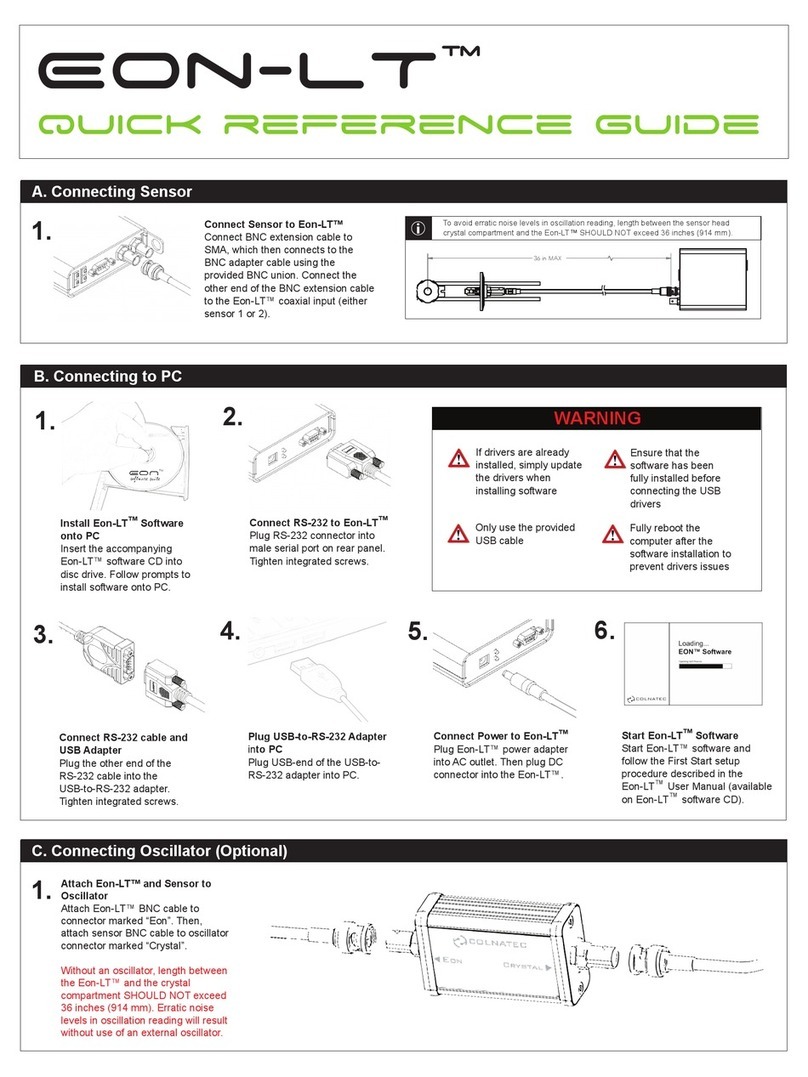
Colnatec
Colnatec Eon-LT Quick reference guide
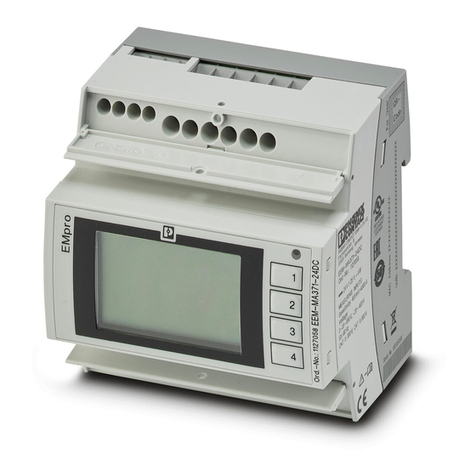
Phoenix Contact
Phoenix Contact EMpro EEM-MA371 Installation notes for electricians

Veeder-Root
Veeder-Root EMR3 XStream-PKG Setup and operation manual
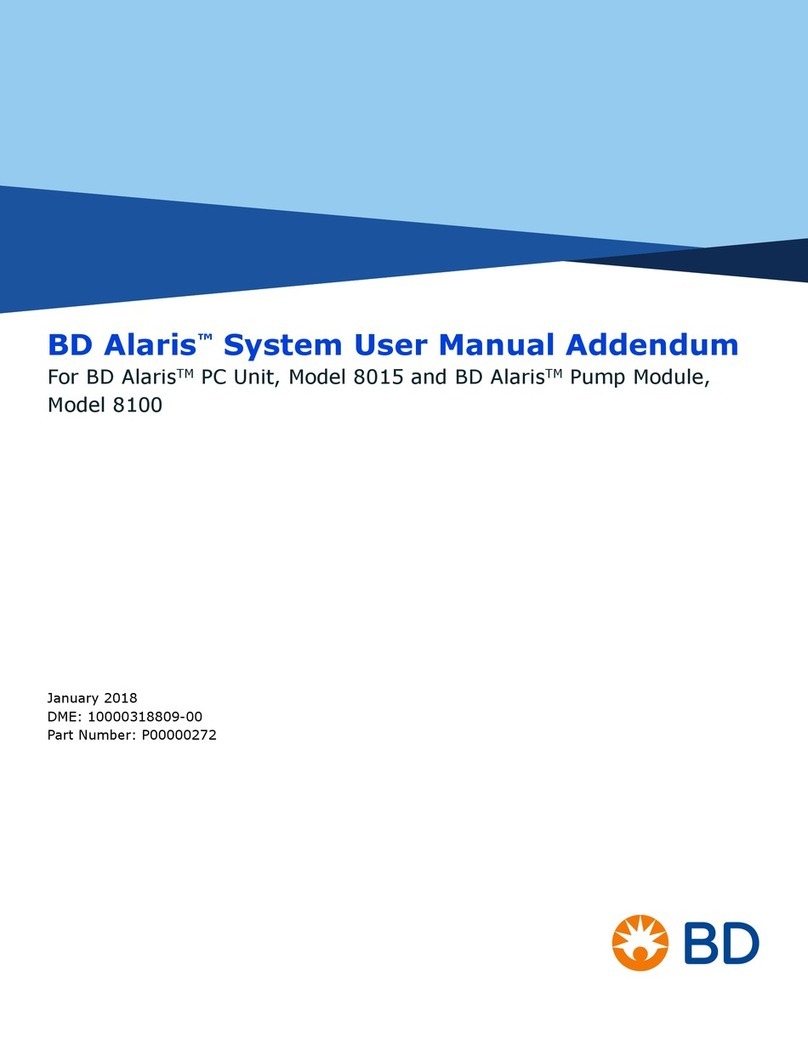
BD
BD ALARIS 8015 User manual addendum

Ulvac
Ulvac GP-1000G instruction manual

